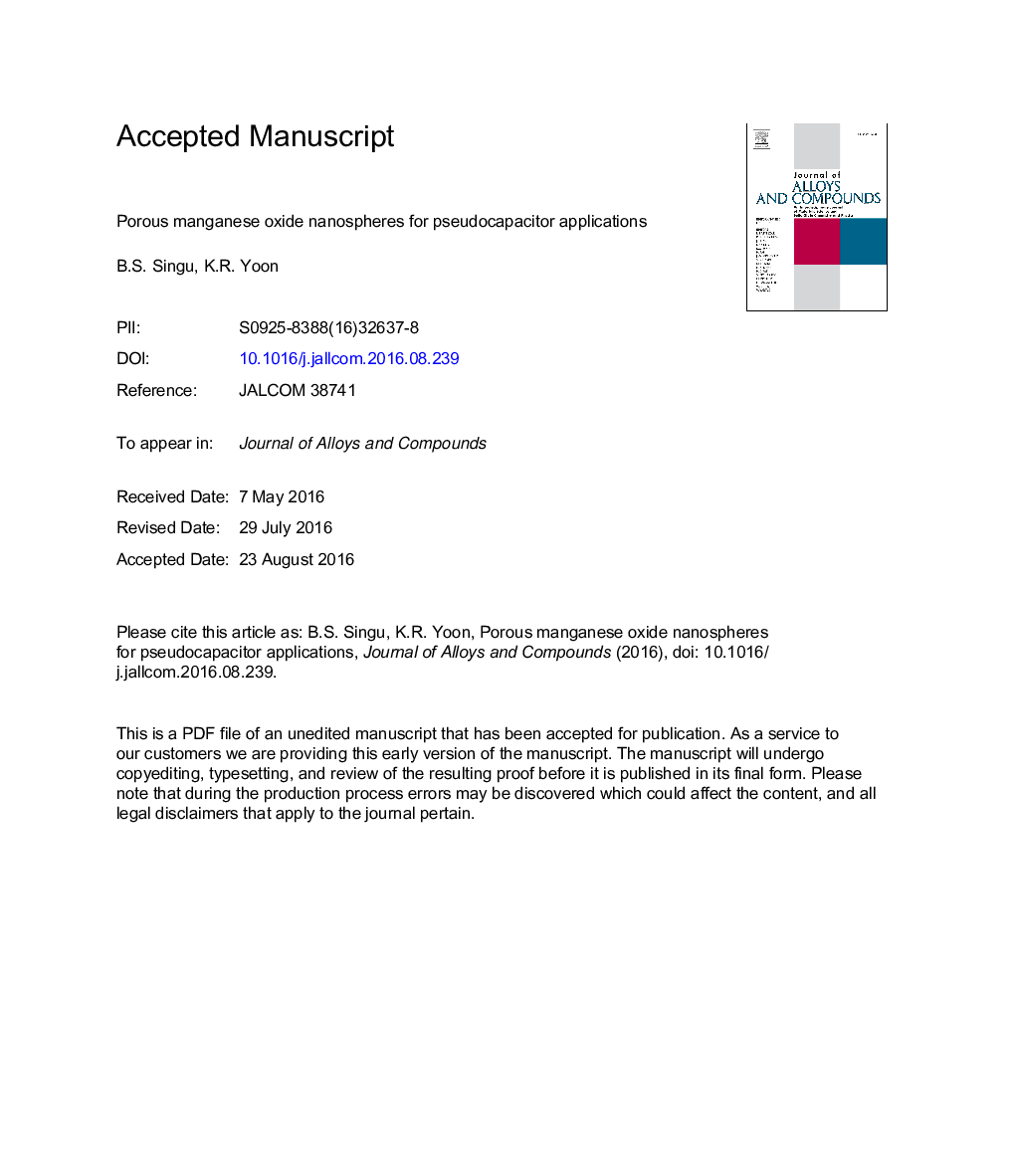| Article ID | Journal | Published Year | Pages | File Type |
|---|---|---|---|---|
| 5461457 | Journal of Alloys and Compounds | 2017 | 33 Pages |
Abstract
Mesoporous, uniform manganese oxide nanosphere thin films were grown on a stainless-steel substrate using the successive ionic layer adsorption and reaction (SILAR) method. The amorphous manganese oxide nanosphere thin films (AMONTFs) were characterized by grazing incidence X-ray diffraction (GI-XRD), X-ray photoelectron spectroscopy (XPS), field emission scanning electron microscopy (FE-SEM), and transmission electron microscopy (TEM). The GI-XRD analysis reveals that the manganese oxide nanosphere thin films were present in the forms of α-MnO2 and γ-MnO2. XPS demonstrates that the thin films contain a mixture of manganese oxides: MnO2 (Mn4+) and MnOOH (Mn3+). The effect of the number of SILAR cycles on the morphology was observed systemically by FE-SEM and greatly influences the size of these unique nanospheres. The electrochemical properties of the AMONTF electrodes were analyzed by cyclic voltammetry (CV) and the galvanostatic charge-discharge (CD) method. The outcomes of the FE-SEM and electrochemical measurements reveal that the thin film obtained after 60 SILAR cycles has a uniform nanosphere size distribution and large specific capacitance. The manganese oxide thin films exhibit a maximum specific capacitance, energy, and power density of 262.0 F gâ1, 18.3 Wh kgâ1, and 7999.4 W kgâ1, respectively, in an aqueous 1 M Na2SO4 electrolyte solution.
Related Topics
Physical Sciences and Engineering
Materials Science
Metals and Alloys
Authors
B.S. Singu, K.R. Yoon,
